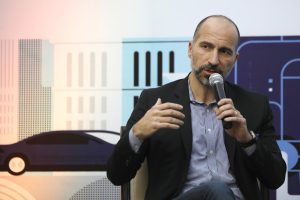Few countries in history have experienced as sudden a transformation as Saudi Arabia. Until the founding of the modern state by the Saud family in the early 20th century, the vast Arabian Peninsula was inhabited mainly by nomadic groups living a traditional lifestyle that hadn’t changed much in thousands of years. The discovery and exploitation of oil brought an unprecedented influx of wealth that, almost overnight, catapulted the country into the top echelon of the world’s economies. That affluence, combined with traditional values, has led to some of the country’s most compelling apparent paradoxes.
“Development happened so fast that they haven’t really had a chance to keep up with it the way other societies have,” says Peter Bogaczewicz a Canadian architect and photographer who has lived in the Saudi Arabian capital of Riyadh for the past five years. Examples of the country’s mixture of tradition and modernity are everywhere in Bogaczewicz’s new book, including its title: Kingdom of Sand and Cement. Bogaczewicz has spent the past half-decade traveling the country, initially out of a desire to document historic sites threatened by the rapid pace of development. During that time, he photographed abandoned villages disappearing back into the desert as well as 10,000-year-old petroglyphs.
“The petroglyphs are just these rocks at the side of the road,” he says. “You can drive off the highway and a couple hundred meters away you’re faced with this amazing scene. Anywhere else you’d have a museum built around it. Here, there were just a few people scratching their names into the side.” As part of Crown Prince Mohammed bin Salman’s effort to promote Saudi Arabian tourism, the country is now working to preserve some historic sites. But countless others—including some documented in Bogaczewicz’s book—have already been destroyed in the country’s rush to modernize.
In other ways, though, Saudis manage to hold onto their cultural past. On weekends, many young men drive their cars out to the desert to go off-roading, slaloming down the sides of sand dunes as spectators watch. Another of Bogaczewicz’s photographs captures a Saudi family having a picnic under a highway overpass, much as their bedouin ancestors might have stopped their caravansary by a desert wadi to have a meal. And, of course, Islam remains central to Saudi identity. Bogaczewicz even got the opportunity to photograph Mecca’s Great Mosque. “It was a little nerve-racking at the time, but I realized it was probably a once-in-a-lifetime opportunity,” he says.



